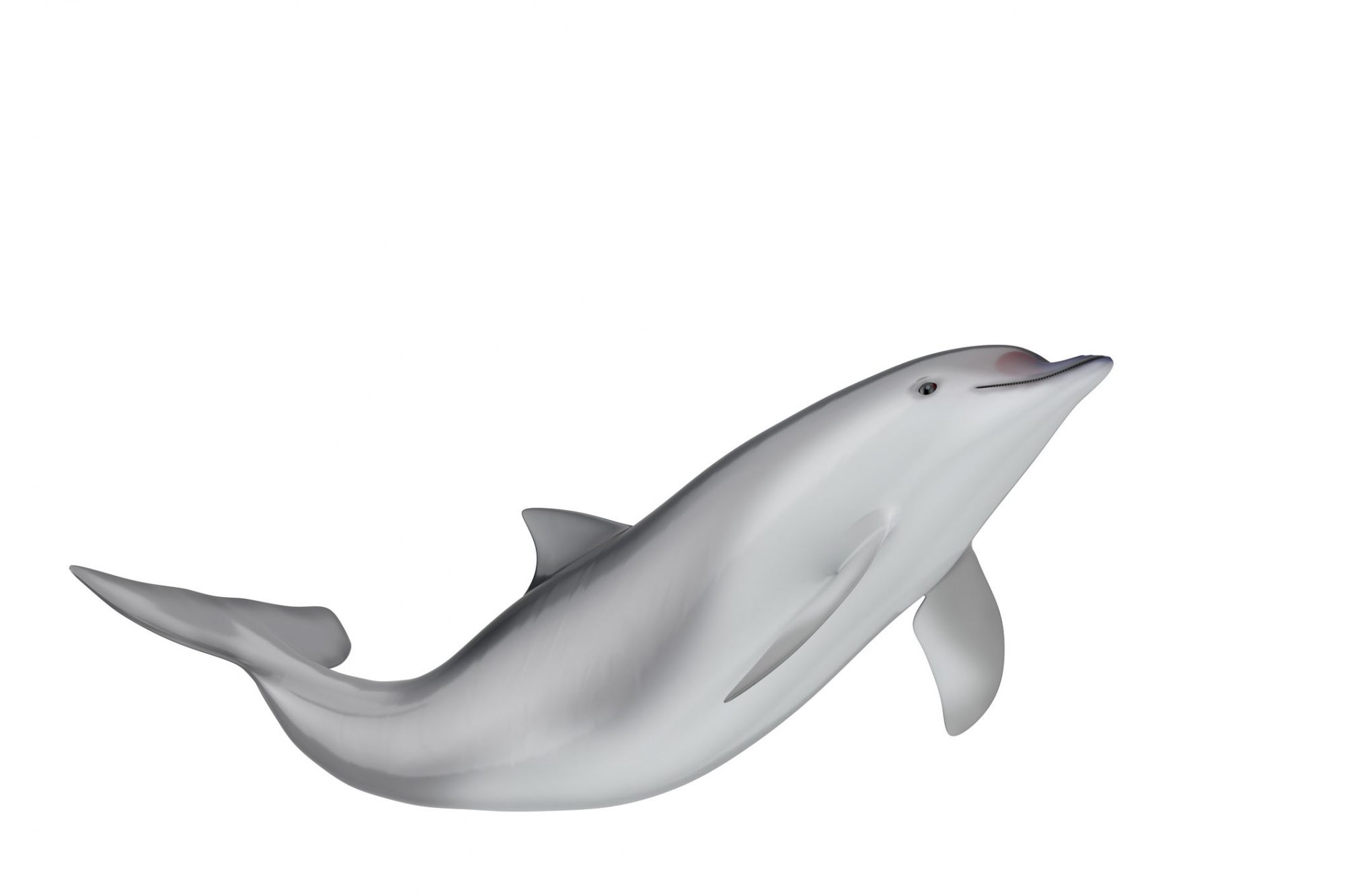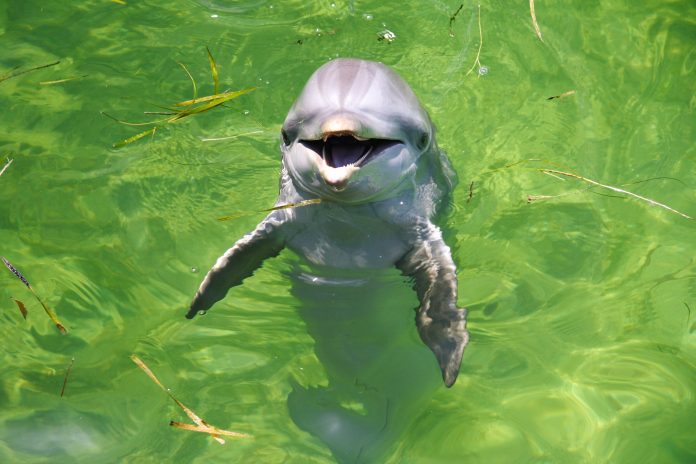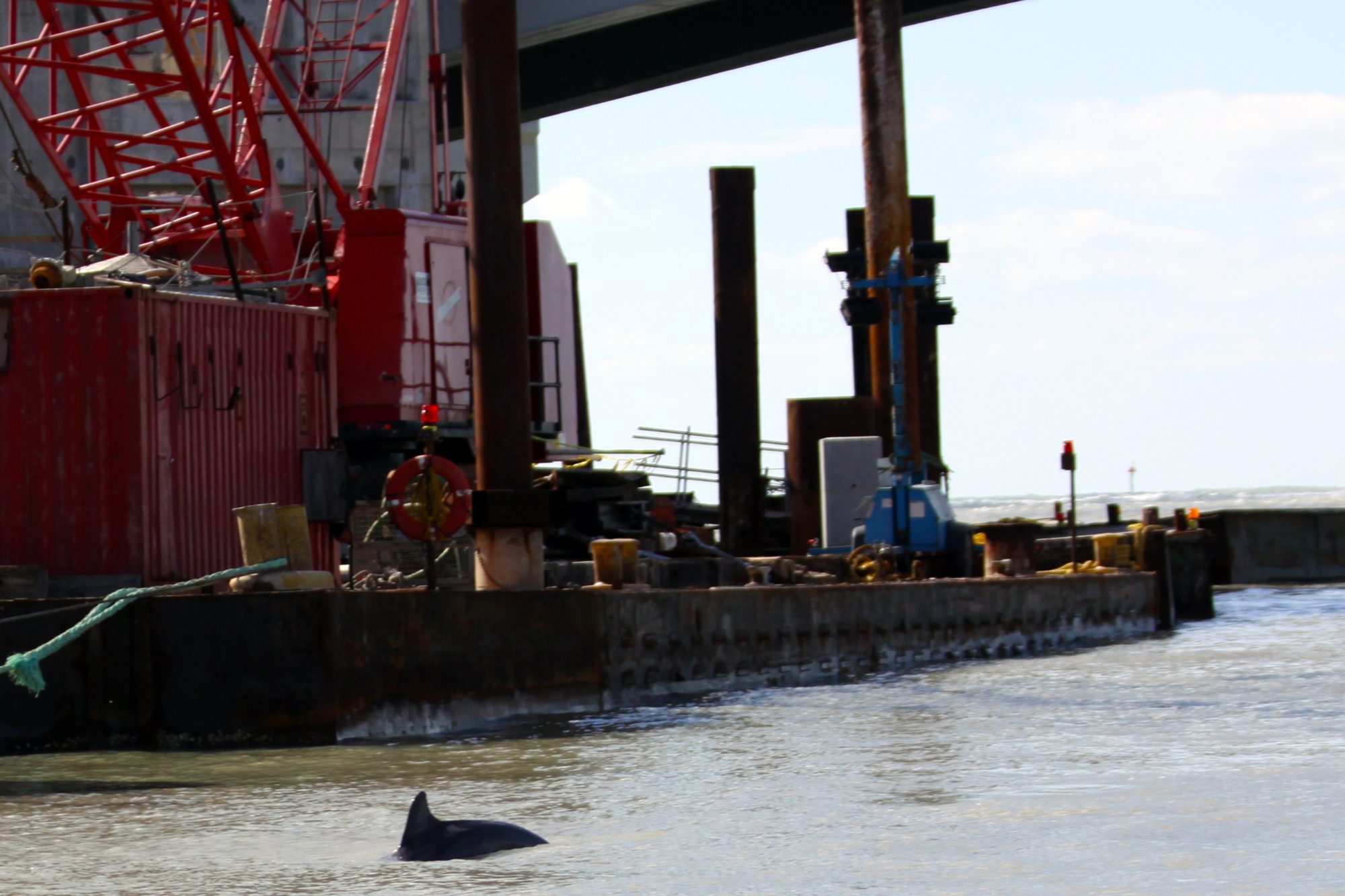Ann Weaver PhD, Dolphin Behaviourist and Biostatistician, offers insight into minimising the impacts of coastal construction projects, ensuring the quality of coastal life such as dolphins
Coastlines are the most endangered habitats on earth. 70% of the human population clambers to colonise them. With the human population projected to reach 9.9 billion by 2050, noise pollution and environmental disruption must be monitored and minimised to ensure the quality of future life.
A major source of environmental disruption is the range of activities related to coastal construction. Seawalls are built to contain the soil and create new land. Incalculable pilings are pounded into the seafloor for moorings. Inestimable tonnes of sea floor are dredged. Land masses are moved and shaped to create arenas, airports, and shipping yards on the water.

Replacing ageing maritime infrastructures is essential
A widespread form of coastal construction is replacing ageing maritime infrastructures such as bridges. I am the principal investigator of an intensive, ongoing 18-year NOAA-based study to document changes in free-ranging bottlenose dolphins before, during and after a five-year bridge replacement project in prime dolphin habitat. My study’s results give direction to minimising the impacts of future coastal construction projects.
To document impacts, I collected three measures of dolphin behaviour in the immediate construction zone before, during and after bridge replacement on 1219 surveys across 11 years. One, dolphin presence and absence was documented to see how often dolphins occurred in the area before construction to compare to during and after construction. Two, when dolphins were present, they were counted to see if their numbers before construction changed during and after construction. Three, dolphins’ use of the area was documented to see if any main behaviours before construction changed during and after construction.
Statistical results of logistic and negative binomial regression analyses revealed these findings. During and after construction:
- Dolphins were present significantly less often.
- Dolphin numbers were significantly lower.
- Females were present significantly less often.
- Feeding was significantly less frequent.
Alternatively, dolphin social behaviour did not change across construction but shifted to later in the day when construction activities were at an ebb.
Interpretation of findings on coastal construction
My interpretation of these findings relates to the fact that construction occurred in two 2.5-year phases: Removing and replacing the west lane, then the east lane. Both involved the same series of activities: above and below water demolition, dredging, debris removal, and replacement. Dolphins’ first-phase behaviour was wholly disrupted but second-phase behaviour increasingly resembled baseline. My interpretation is that the two-phased nature of construction may have given the dolphins the chance to learn and adapt by showing them what to expect even as they resisted changing their habitual use of prime dolphin habitat.
These results led to two conclusions. Firstly, coastal construction shows no signs of abating. However, if construction projects are designed to be completed in two phases to give coastal dolphins a chance to adapt, maybe they will adapt. Secondly, 11 years of data suggested that dolphins will only change what anthropogenic environmental disruption forces them to change, shifting different behaviours in different ways. Therefore, dolphin presence in construction-degraded habitats does not mean that anthropogenic activities were neutral.
Monitoring and mitigation of all coastal construction projects should be mandatory, funded by ear-marked governmental and construction company monies as part of construction costs.
Key parts of an ideal research effort
The ideal research effort has five key parts. Species at the apex of the food pyramid, such as dolphins, are key informants of environmental conditions. One key part is an animal behaviourist who monitors dolphins in and beyond the construction zone. Free-ranging coastal dolphins are relatively easy to study scientifically during small-boat surveys. The more detailed the documentation of how dolphin behaviour changes across construction, the more valuable the study.
Two is an ichthyologist who monitors middle and lower trophic levels. Fish are also sensitive sentinels of environmental quality, the crucial ‘canary in a coalmine’ because apex marine species depend on fish to eat. My study shows that coastal construction activities destroy fish populations, an important impact to mitigate for dolphins and humans alike.
Three is an acoustician who monitors the acoustic scene with hydrophone arrays. In the construction zone, noise pollution, boat traffic, and the disturbed acoustic scene of dolphins, fish, and invertebrates can be measured and compared to the undisturbed acoustic scene beyond it.
Four is a popular science writer whose regular updates from the field can educate and entertain the public, soliciting citizen cooperation as they bond with local wildlife on a first-name basis. People have an uncanny attraction to dolphins. My study shows that the public appreciates being informed, based on enthusiastic responses to my 15 years of publishing weekly popular science articles to introduce the public to their 400 local dolphins.
Five is minimising exposure to horrific construction noise pollution by establishing temporary sanctuary bays for the duration of construction to provide acoustic shelter. One proposal would be temporarily restricting boats to a narrow no-wake zone along the edges of sanctuary bays to eliminate boating activity in the middle of the bay. Local tax collector offices maintain lists of registered boaters, who can be emailed about boating restrictions in sanctuary bays. Passive economical monitoring systems for violators in sanctuary bays could be solar-powered cameras mounted on channel marker pilings. Fines can be used to augment monies earmarked to fund research efforts.
Most of all, monitoring and minimisation before, during and after every coastal construction project must be mandatory to ensure the quality of coastal life.
Please note: This is a commercial profile
© 2019. This work is licensed under CC-BY-NC-ND.












